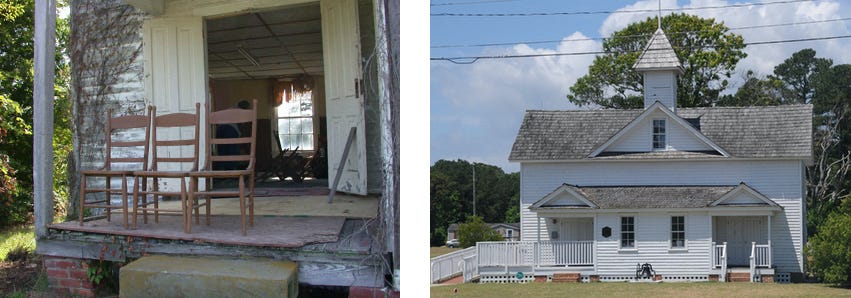Notebook: Advanced Study
by Ann Kjellberg, editor
The Jarvisburg Colored School in rural Currituck County, North Carolina, was founded in 1865 when a local Black farmer named William Hunt donated some of his land, out of “the regard for and love I bear for the rising generation of the colored race … for the use of a school in said district for the benefit of the children of the colored race.” It operated until 1950, educating many who went on to become teachers, school administrators, businessmen, and workers in many trades. In 2003 local residents organized a nonprofit to preserve the schoolhouse as a museum. In 2019 artist Lisa Batemen created an audio installation on the site of songs collected from among alumni: “play and work songs, new songs learned in school, songs with games during recess, songs sung while missing school to pick cotton and plant potatoes, and songs sung on the long walks to and from school each day.”
Last fall I read Carter G. Woodson’s The Mis-Education of the Negro for the first time when it was reissued by Penguin Classics, and we featured some of it as a Book Post Diary. Woodson, who was born in 1875, made an exceptionally clear and straightforward case that American education needed to broaden its object of study to include the African origins and American experience of its four million recently emancipated citizens, about a tenth of the population. He was concerned primarily that these students have needed knowledge relevant to their situation; but one could equally make the case that awareness of these Americans’ origins is of vital concern to everyone else as well—and not only for practical reasons. Of course scholarship and culture are continually refreshed by many people who, out of a spontaneous natural sympathy, embrace the study of cultures with which they have nothing personally to do. Curiosity about the not-me is as close to the heart of learning as understanding oneself.



